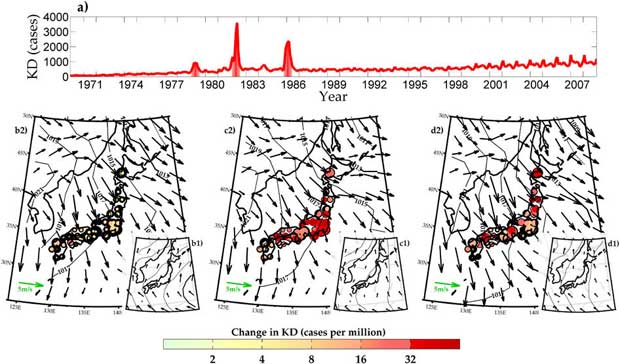
Large-scale wind currents may be linked to occurrences of Kawasaki disease, a feverish childhood ailment that can lead to irreversible heart damage, according to new research by an international team including University of Hawaiʻi at Mānoa researcher Marian Melish.
Observing that the disease often occurs in fall, winter and early spring—with the three major epidemics in Japan peaking in the months of May, March and April—Melish and colleagues from the University of California at San Diego, Institut Català de Ciències del Clima and Institució Catalana de Recerca in Spain; Scripps Institution of Oceanography in California; and Jichi Medical University in Japan examined a climate connection to recorded outbreaks in Japan, Honolulu and San Diego.
They found a correlation with the wind currents that track from Asia to Japan and traverse the North Pacific. The results suggest that the environmental trigger for Kawasaki disease could be wind-borne, indicating that efforts to isolate the causative agent should focus on the microbiology of aerosols, the team reports in the November 10 edition of Scientific Reports.
“Although Kawasaki disease is often considered to be a rare disease, it is a particular problem in Hawaiʻi where there are at least at least 50–100 new cases each year,” said Melish, a professor of pediatrics at the John A. Burns School of Medicine.
The disease affects young children of all races but is most common in children of Japanese and Korean ancestry. It appears abruptly in a previously healthy child. Fever is followed by rash; redness of the whites of the eyes, mouth, lips and tongue; swollen hands and feet; and swollen glands in the neck. Untreated, it causes damage to the coronary arteries in one out of four children and may lead to serious heart problems in early adulthood.
The cause is not known and there is no diagnostic test for Kawasaki disease.
Funding for the study was provided in part by grants from the National Institutes of Health, National Oceanographic and Atmospheric Administration and La Marató de TV3 Foundation.
Editor’s note: This story was updated November 22 to correct the name of the journal.

